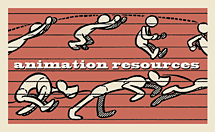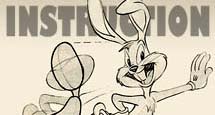This posting is a stub. You can contribute to this entry by providing information through the comments link at the bottom of this post. Please organize your information following the main category headers below….
Birth/Death
Birth: Nov. 3 1896
Death: April 9, 1970 in Dogfish Head, Maine
Occupation/Title
Illustrator
Bio Summary
Born Nov. 3, 1896 in Magda, Sweden his father left him in the hands of Teng Tenggren (Grandfather). His father went to the United States for work as a illustrator. At seventeen Gustaf went to Valand for painting instruction from 1913-1916. After which he worked on a Swedish folklore from 1917-1926. Moved to Cleveland in 1920 and moved to New York in 1922. (Canemaker 39)?Between 1923-1939 he worked in America for a commercial advertisement company and meanwhile, during the depression, in 1936, he worked for Disney; with such films as Bambi. (Santi)?Gustaf Tenggren left the Disney Company in Jan. 1939 with rumors of being disgruntled over the Snow White film. (Canemaker 42)?Jan. 1942-1962 Gustaf Tenggren works on several children’s books such as The Tawny Scrawny Lion and The Pokey Little Puppy (Canemaker 44)
1945 Gustaf moves to Maine for Solitude where he worked on his illustrations until he died on April 9th, 1970. (Canemaker 47)?Early Life/Family
Early Life/Family
Gustaf’s father was a decorative painter and he immigrated to America, leaving Gustaf in care of his Grandfather Teng. His grandfather was a decorative painter and woodcarver who became the boy’s surrogate father. (Canemaker 39)?Gustaf liked the supernatural forests of Magra and watched his grandfather restore the churches in the area in which woodcarvings of sculpted dwarfs were added to the pulpits and altars. (Canemaker 39)
Education/Training
At seventeen Gustaf won a scholarship to study painting at Valand, which was a famous art school in Gothenburg, Sweden. He studied painting there from 1913 to 1916. (Canemaker 40)
Career Outline
After painting school, Gustaf illustrated a popular annual of Swedish folklore and fairy tales called Bland Tomar och Troll (Among Elves and Trolls) (Canemaker 40)?In 1920 Gustaf Tenggren has his first art exhibit and then finally went to New York for a career as a illustrator. Between 1923-1939 Gustaf has placed his illustrations in American commercials in twenty-three books. (Canemaker 40)?During the depression Gustaf worked for Disney. He worked on several features such as Bambi and between features he helped work on the backgrounds and atmospheres of “The Ugly Duckling” and “The Old Mill”. On January 1939, Tenggren left Disney. (Canemaker 41)?Between 1942-1962 Gustaf Tenggren worked for Golden Books in which he worked on illustrations for twenty-eight books. (Canemaker 44)
Comments On Style
Tenggren used silhouetted figures with character faces that had huge noses that filled the faces. ?(Canemaker 39)?Influences ?An influence that was traced back by Mary T. Swanson was that Tenggren got influence from illustrator Arthur Rackham. (Canemaker 40)?Gustaf also had influences from nineteenth-century German and Norwegian folk tale illustrators. (Canemaker 40)
Influences
Personality
Independent personality but was often dramatic and moody. He had long hair and was often seen as a loner. (Canemaker 41)
Anecdotes
“He was arrogant. Part of him was into being a big shot, the most talented. He wouldn’t be interested in anything that was only halfway there. He didn’t like team effort. He didn’t like to be part of a group that was trying to style something. You want style? Come to him, he’ll style it for you.” (Frank Thomas) (Canemaker 41).
Miscellaneous
Tenggren had a problem with Alcohol and was involved in a scandal that involved the Niece of Milt Kahl.
Tenggren was known as a womanizer by a quote of Frank Thomas. “He was a womanizer, a chaser who liked the younger gals.” (Canemaker 44)?
Filmography
Background illustrator for “The Old Mill” (1937)
Background illustrator for “Little Hiawatha” (1937)
Illustrator for Snow White
Illustrator for Pinnocchio
Illustrator for Bambi?Background illustrator for “The little duckling” (1939)
Honors
Related Links
www.thesantis.com/who_who/illustrators___authors.htm
Bibliographic References
Canemaker, John Before the animation begins: the art and lives of Disney inspirational sketch artists New York. Hyperion 1996??Santi, Steve. Illustrators/Authors-Collecting Little Golden Books. Updated 10/1/06. Accessed 10/26/2006. www.thesantis.com
BIO-AAA-304
Contributors To This Listing
Alfredo Lozano
To make additions or corrections to this listing, please click on COMMENTS below…?




























